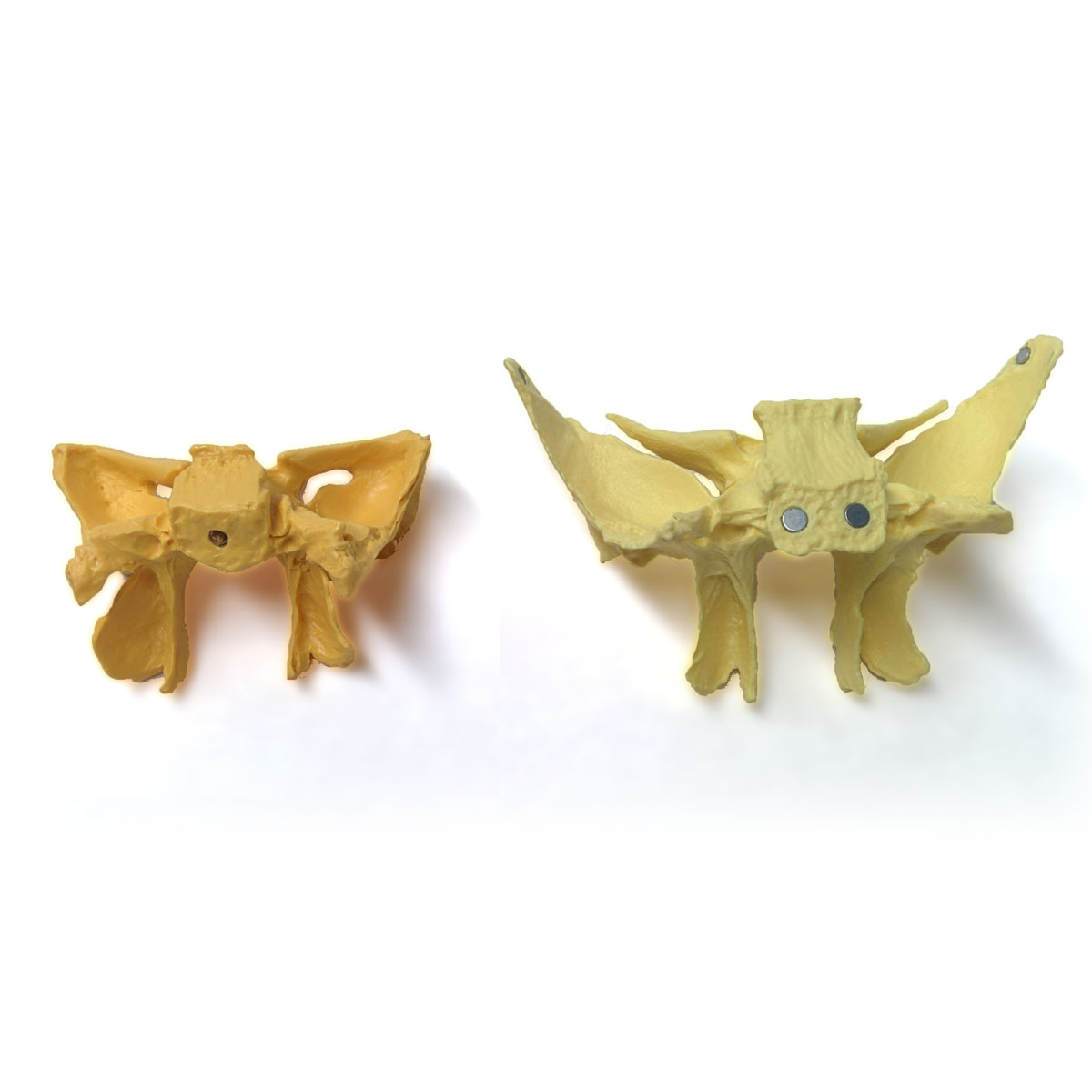We often get calls from customers who have purchased a model online from eBay or amazon and did not quite get what they expected. The pictures looked good, the price was great and a skull is a skull, right? Depending on your needs this can definitely work but chances are, if you have found us you are looking for anatomical accuracy and details at the best price.
Recently one of our customers called complaining that they bought a disarticulated skull online from a different marketplace but were having regrets and were not able to return it. They bought it based on the low price, description claiming that magnetic models lose their strength and that for the savings it would be 'good enough'. They regreted not having bought one of our magnetic models so we offered to buy their model from them and in place they have purchased and are happy with their magnetic model - Thanks Claire!
Now that we have this budget option in hand we thought we would take a look and compare it to one of our models. We have a 5 year old demo model that travels with us to trade shows and exhibitions that we decided to use since it was right there.
First Impressions

Right out of the box the fitment and how big some of the gaps are on the budget model are a bit of a concern. The colour is bright and the general shape are ok, but it does not look like it fits properly. The bones fit together with male and female plugs that should tightly fit together. Whether it is a manufacturing issue or that is how they fit we are not sure.
We have sold hundreds of the magnetic skulls so we are biased and will try to be objective. The model is in good shape and fits as expected. The gaps and connections between the bones are very noticeable. Our older demo model is a little dusty but otherwise holds up quite well. We quickly removed the temporal bone and it connected back into place with no issues or lack of magnetism.
Details
The budget model is quite solid when put together but it does take some work to take apart. Bones have to be pulled straight out to avoid bending any of the pins so it can take some time. The jaw is articulated using a spring and moves around while holding the skull but otherwise it is solid.
The bones themselves are a little strange in the shape and size relative to the skull. The sphenoid has a different shape and scale which is expected for a smaller skull however the shape is not commonly found on other models or natural bone specimen.
The magnetic model is fairly straight forward to handle and study. The mandible is attached by magnets and is not hinged at the condyle which we would have liked. Aside from that the bones and scale of each bone appear more inline with natural specimen.
The magnets make assembly and disassembly quite easy. The smaller bones on the model do use pins, where the bone is not large enough to house a magnet but everything fit and was aligned as expected.

Usability
You are probably not looking at a disarticulated skull to keep it assembled and on a shelf. You would like to know what it is like to handle and work with.
The temporal bone and it's relation to the rest of the skull can be tough to demonstrate and is often used to show movement. How long does it take to remove? We timed ourselves (after getting familiar with how both articulate) disassembling the skull, removing the temporal bone and reassembling the skull. This took a little over 85 seconds on the budget model with connectors and pins and 6 seconds on the magnetic model. The magnetic model allows you to remove the temporal bone without disassembling the rest of the model.
When reassembling the budget model we did have some issues getting the smaller facial bones to sit tightly and the ethmoid was difficult to align.



Verdict
Any skull is better than no skull but if you are making the investment into your education, practice or school why would you not want to use something accurate? We do feel that the magnetic articulations are more practical but that aside the bone reproduction and way that things fit together are not as good on the budget models.
We are biased. We judge everything against natural bone specimens since that is what we are known for and familiar with. For us the value of having the skull to learn from and teach with is only useful if the bones are accurate and comparable to the real thing.
